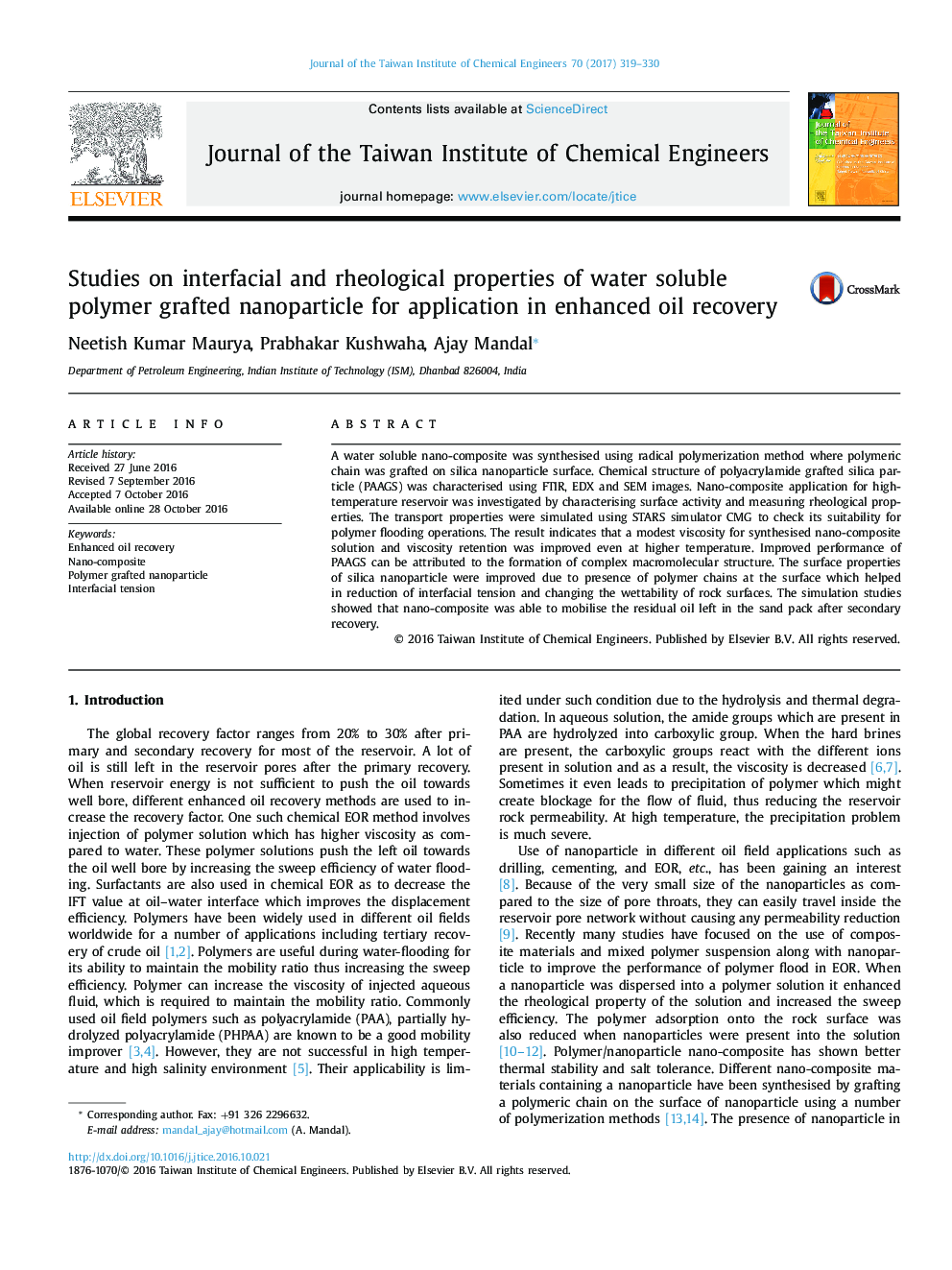| Article ID | Journal | Published Year | Pages | File Type |
|---|---|---|---|---|
| 4998913 | Journal of the Taiwan Institute of Chemical Engineers | 2017 | 12 Pages |
â¢Synthesis of polyacrylamide grafted silica nanoparticle (nano-composite).â¢Rheological behaviour and increased temperature tolerance of prepared nano-composite.â¢Characterization of increased surface activity of nano-composite through measurement of surface and interfacial tension.â¢Wettability alteration of reservoir rocks form intermediate wet to water wet.â¢Simulation of nano-composite flooding studies in sand pack core.
A water soluble nano-composite was synthesised using radical polymerization method where polymeric chain was grafted on silica nanoparticle surface. Chemical structure of polyacrylamide grafted silica particle (PAAGS) was characterised using FTIR, EDX and SEM images. Nano-composite application for high-temperature reservoir was investigated by characterising surface activity and measuring rheological properties. The transport properties were simulated using STARS simulator CMG to check its suitability for polymer flooding operations. The result indicates that a modest viscosity for synthesised nano-composite solution and viscosity retention was improved even at higher temperature. Improved performance of PAAGS can be attributed to the formation of complex macromolecular structure. The surface properties of silica nanoparticle were improved due to presence of polymer chains at the surface which helped in reduction of interfacial tension and changing the wettability of rock surfaces. The simulation studies showed that nano-composite was able to mobilise the residual oil left in the sand pack after secondary recovery.
Graphical abstractDownload high-res image (188KB)Download full-size image
